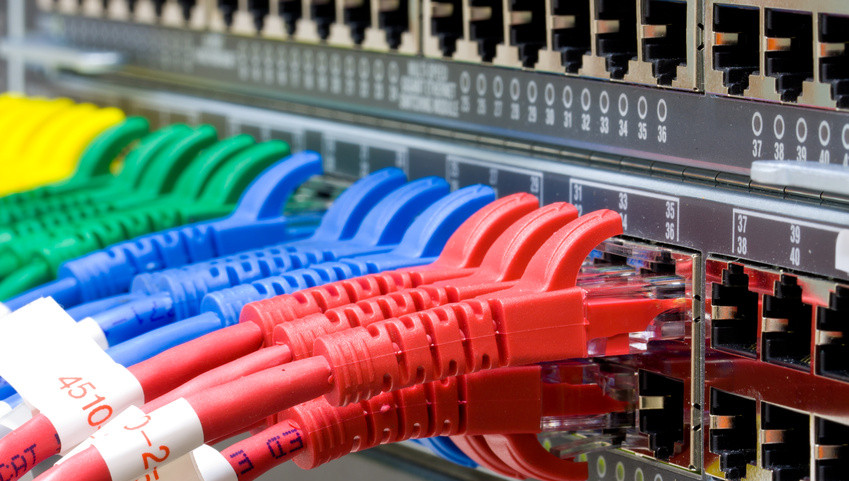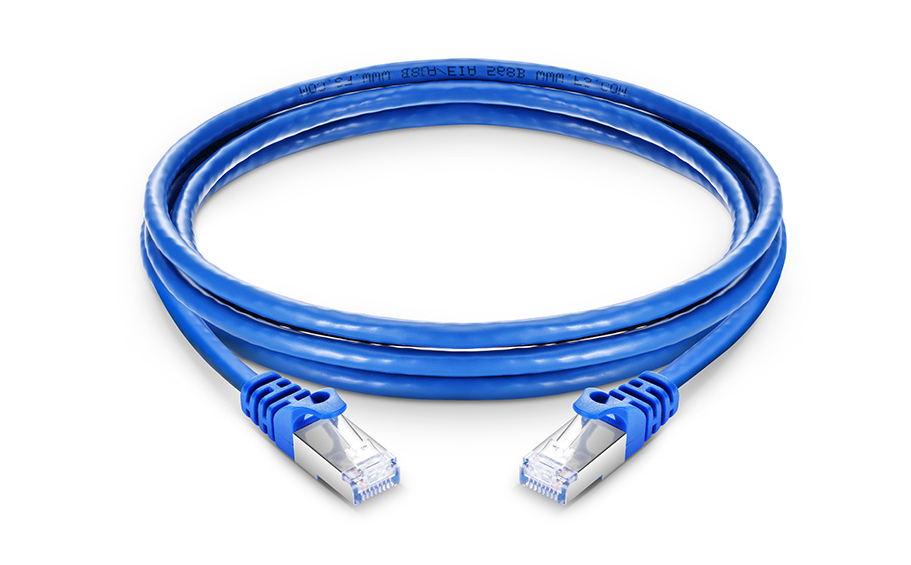Quick View of Ethernet Cables Cat5, Cat5e And Cat6
Ethernet cables are widely used in wired networks. Usually, these cables connect devices in local area networks like Ethernet switches, routers and PCs. If you’re researching the different types of twisted-pair copper cables used to transmit data in a network, making the choice between Category 5 (Cat5), Category 5e (Cat5e) and Category 6 (Cat6) cables can be a rather confusing one. In the following part, I will introduce the differences between Cat5 vs Cat5e vs Cat6 Ethernet cables.
What Are Cat5, Cat5e and Cat6 Ethernet Cables?
Category 5 and Category 6 are both made up of four twisted pairs of copper wire for carrying signals, used mainly for Ethernet computer networks. Cat5 is the older variation of the cables, especially as compared to Cat6. Cat6 is currently the most advanced one among the three types of cables, works faster than Cat5 or Cat5e. And it also can support higher frequencies.
What Is Cat5 Cable?
Category 5 (Cat5) has four twisted pairs of copper wire terminated by RJ45 connector. Category 5 cable has a bandwidth of up to 100 MHz, support 10 or 100 Mbps speed. Category 5 cable can be used for ATM, taken ring, Ethernet 1000Base-T, 100Bast-T, and 10Base-T networking. Cat5 is one of five grades of UTP cabling described in the EIA/TIA-586 standard. Cables belonging to Category 5 are either solid or stranded: solid Cat 5 is more rigid, and the better choice if data needs to be transmitted over a long distance, while stranded Cat 5 is very flexible and most likely to be used as patch cable. And the maximum length (maximum certifiable length) for Cat 5 patch or crossover cables is 100 meters.
What Is Cat5e Cable?
Category 5e (Cat5e) is an enhanced version of Category 5 cable, developed by TIA/EIA in 2001 to improve certain cable characteristics important to Gigabit Ethernet operation. Cat5e speed can reach up to 1000 Mbps "gigabit", so in theory, it's faster than Cat5. Cat5e ethernet cables are deployed in many places. For example, it can be used in the home networking environment with various lengths. Another common use of Cat5e patch cable is premise wiring.
What Is Cat6 Cable?
Cat6 ethernet cable is being made with 23guage conductor wire as opposed to the slightly smaller 24guage for Cat5e. And it also has a separator to handle crosstalk better. This separator isolates each of the four pairs of twisted wire from the others, which reduces crosstalk, allows for faster data transfer, and gives Cat6 bandwidth twice than that of Cat 5! Cat6 cable is ideal for supporting 10 Gigabit Ethernet speed, and is able to operate at up to 250MHz. The following video shows FS 28AWG slim Cat6 patch cable with smaller cable diameter, which can save up to 36% space than common Cat6 patch cables.
What’re the Differences Between Cat5, Cat5e and Cat6?
In fact, most ethernet cables look similar from the outside. They can be plugged into ethernet port because all of them have RJ45 port. However, they do be different inside.
Cat5 vs Cat5e Cable
The differences between Cat5 and Cat5e show in all aspects of performance: network support, cross talk and bandwidth. Cat5e internet cable supports Ethernet, Fast Ethernet, and Gigabit Ethernet speed while Cat5 cable speed just supports the former two. CAT5e cable patch is completely backwards compatible, and can be used in any application in which you would normally use CAT 5 cable. In addition, cross talk has been reduced greatly in Cat5e cabling compared with Cat5 cable. Besides, Cat5e is rated at 350Mhz, which allows it support increased bandwidth than Cat5.
Cat5e vs Cat6 Cable
The general difference between category 5e and category 6 is in the transmission performance. While Cat5e can support gigabit speeds, Cat6 is certified to handle gigabit Ethernet. Additionally, the Cat6 specification is better suited toward environments that are generally unfriendly to twisted pair cabling. This includes areas that have lots of interference from things like power lines, lights, and manufacturing equipment. Still, for most applications, Cat5e is perfectly suitable and preferable to Cat6: it is more economical and performs almost as well. However, if you can be certain that all the components on your network are gigabit rated, and the volume of the data being transmitted calls for certified gigabit performance, then Cat6 is the way to go.
Cat5 vs Cat5e vs Cat6: Which to Choose?
How to choose Cat5, Cat5e or Cat6 cable depends on the situation. If you are satisfied with the speed of your network now, there is no need to go through the trouble of upgrading network, like from Cat5e to Cat6. But what we should consider is that Cat6 cable has good compatibility with Cat5e cable, and it even can support 10GBASE-T, which make it more popular in cabling deployment.
Furthermore, with the fast development of network components and ever-increasing bandwidth, there will be more demanding requirements for network cables. Considering the difficulties of replacing and re-upgrade cables, advanced Ethernet cables like Cat6, Cat7 should be used for future-proofing deployment.




